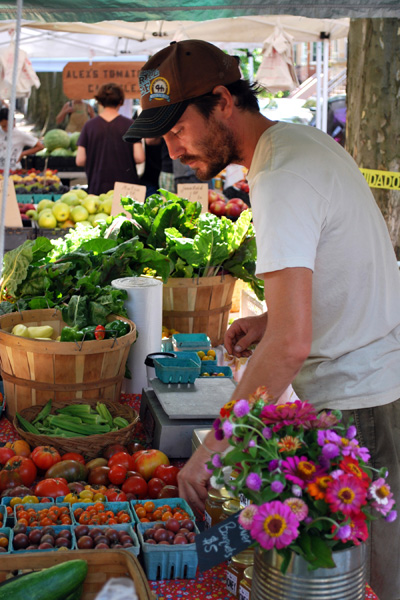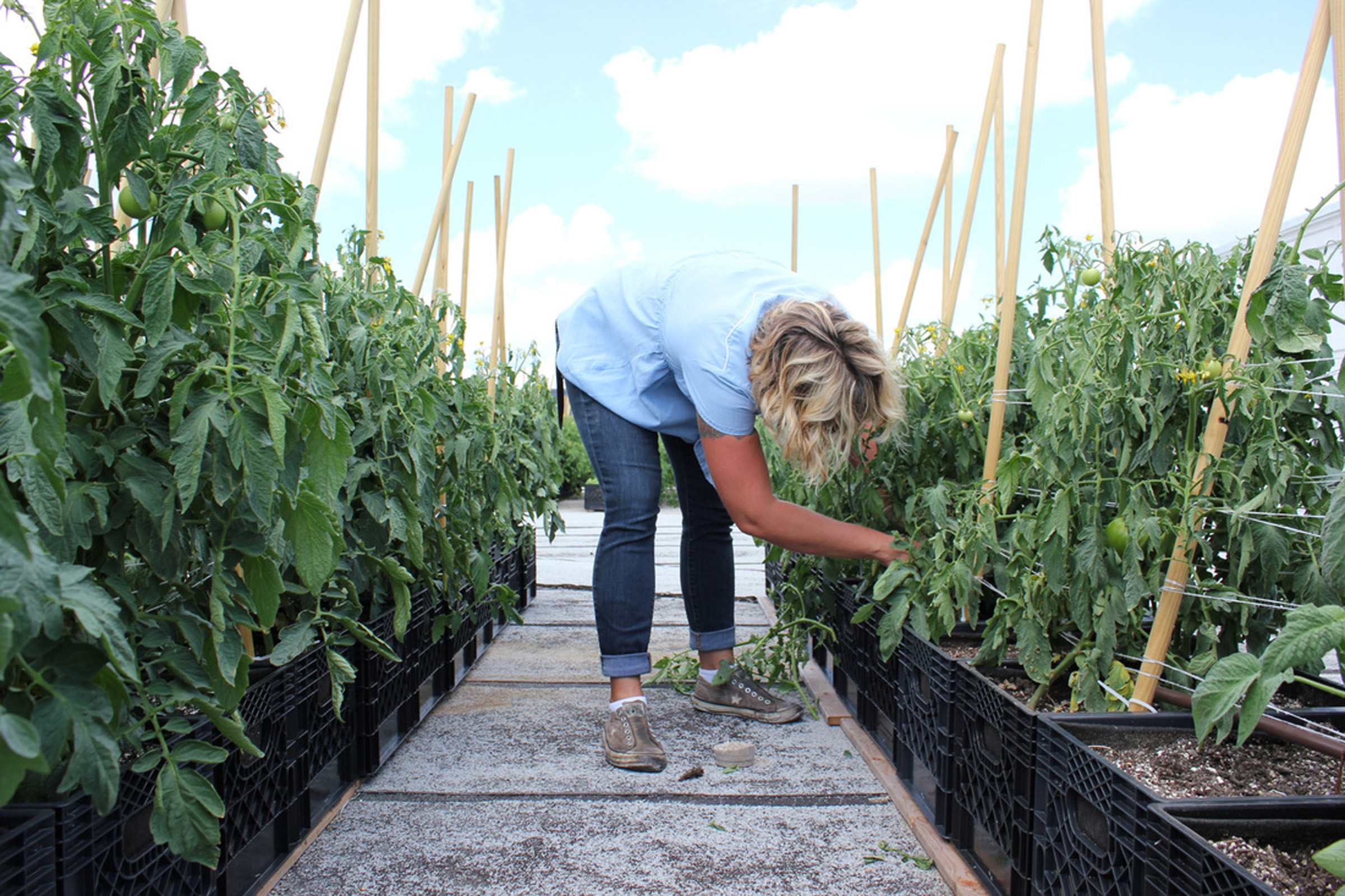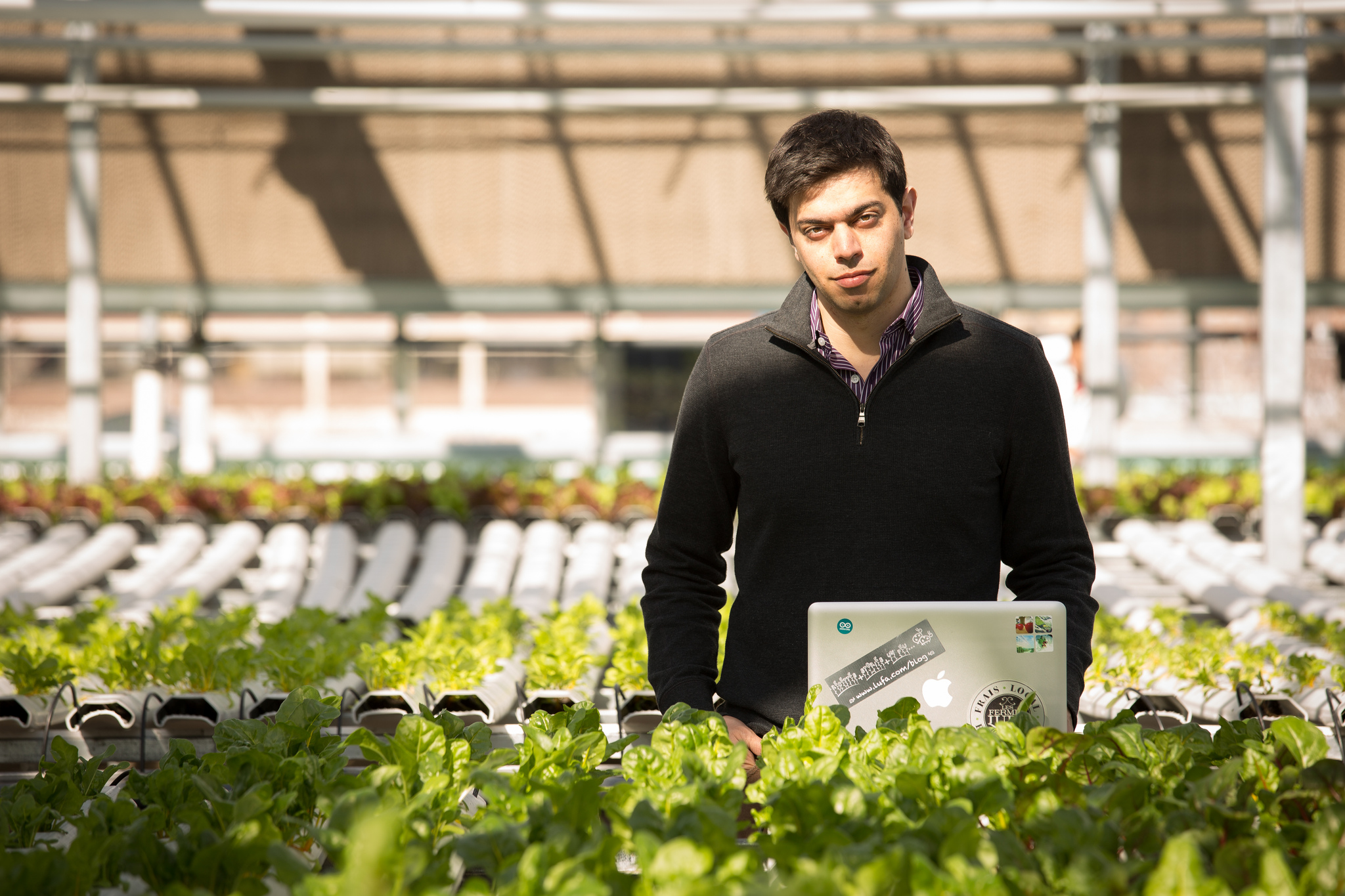financing the farm
Loquacious urban agriculture enthusiasts, like myself, revel in spreading the rooftop agriculture gospel. I’ll happily talk your ear off about the countless benefits of rooftop farming, explain the technical intricacies of skyline farm design, and debate the most robust rooftop crops. What I don’t often talk about, what most rooftop agriculture experts don’t often mention in depth, is finance, the elephant in the room.

Rooftop farmer Ben Flanner, working a farmers’ market in Brooklyn || photo by Jake Stein Greenberg
Earlier this week at Green Roofs for Healthy Cities‘ annual Grey to Green Conference in Toronto, I tackled this “elephant” head on with collaborators Ben Flanner (head farmer and president of Brooklyn Grange) and Mark Winterer (co-owner and director of operations at Recover Green Roofs, LLC). Ben’s company owns and maintains two of the largest commercial rooftop row farms in the U.S. (totaling 2.5 acres) within the NYC region, and Mark’s company designs and builds green roofs in the Boston area, with a specialization in food roofs. Together, we approached the topic of rooftop agriculture finance through the complimentary lenses of designer, farmer/business owner, and contractor.
Here are some of our main talking points, aimed at helping aspiring skyline farmers and entrepreneurs develop strong financing strategies. One of the underlying messages throughout the talk was that while there are varied agricultural production methods and numerous financing strategies, no single approach is “right;” the approaches are simply different.
1| Designing with intent: The first step in realizing your vision for a rooftop farm is pinning down your primary goals. Identifying your objectives and priorities early, while thinking about the big picture, will help you to stay focused and design with intent. Simple questions to ask yourself are: who will grow the food? Who will eat the food? What yields are needed? What scale of financing is possible? These questions will help you select a production strategy. Most commercial rooftop farms deploy some combination of raised beds, row farming, and/or greenhouse hydroponics. You should consider how to best juggle construction costs with material integrity. For example, untreated white pine is an inexpensive raised bed material, but it will degrade quickly and need to be replaced. Cedar is much more expensive, but exhibits a much more long-lasting material integrity. A greenhouse could last a lifetime.
2| Financing the farm: Most North American rooftop farms are financed using a hodgepodge of approaches. These financing strategies often include some combination of loans, incentives (federal, state, or local), personal capitol, investor equity, parent company partnership, long-term purchasing agreement, and crowd-funding. Fleshing out your multi-faceted strategy within your business plan is paramount. During this process, allow your project goals, mission, and vision to drive your strategy. In addition to making your business run more smoothly, a thoroughly developed financing strategy that acutely targets a goal will be more attractive to investors than a half-cooked plan. Be specific, yet conservative, about cost and revenue projections.
3| Profits and payback: Each agricultural production method mentioned above – raised beds, row farming, and greenhouse hydroponics – exhibits pros and cons. The main financial consideration in selecting a method is whether you want a high cost, fast payback or low cost, slow payback approach. Again, there is no “right” approach; there are simply different strokes for different folks. When considering payback, research whether your city or state offers the following incentives for your rooftop farm: tax credits, tax abatements, subsidies, construction rebates, stormwater fee reductions, FAR bonuses, expedited permitting. Also consider that full-coverage rooftop row farms will increase the life of your building’s waterproofing membrane by 2-3 times, which presents additional long-term savings. A 1-2 storey building could additionally exhibit energy savings.

Low-initial investment method at Higher Ground Farm || photo by Maureen White, courtesy of Higher Ground Farm
4| Personnel dance card: Staffing should be organized to meet your farm’s needs. Brooklyn Grange’s logistics, operations, and sales, for example, are run predominantly by the farm’s founding members. Farms built by Recover Green Roofs, by contrast, are typically owned by a parent company (such as Whole Foods Market or Fenway Park) and farmed by a partner company, Green City Growers. Another approach, deployed by Eagle Street Rooftop Farm, involves one head farmer aided by apprentices, interns (receiving college credit rather than a salary), and volunteers. Lufa Farms – a leading Canadian greenhouse hydroponic company – has a staff of over 50, organized into sub-teams for management, production, outreach, etc. Many of Lufa’s employees actually focus on developing technology, rather than on traditional production.
5| Innovative use of technology: One of the biggest differences between the sales approaches of rural and urban rooftop farms is the use of technology. Most rooftop farms rely on websites, blogs, and social media (Facebook, Twitter, Instagram) to build their brand and their audience/customers. One particularly innovative use of technology is Lufa Farm’s Online Marketplace, which allows the farm’s members to customize which farm goods they’d like each week. The goods are boxed and sent to local drop-off points around Montreal.
6| Replicating success: Your long-term financing strategy should consider one last key variable that many rooftop farming companies are already addressing: scale. Many farms choose to gain rooftop acreage through networked rooftops. If you want your rooftop farming company to be profitable, you’ll need to crunch some numbers to determine how big your raised beds, row farm, or greenhouse needs to be. Keep in mind that launching multiple farms should be a phased approach, so keep calm and farm on!
 EAT UP
EAT UP
